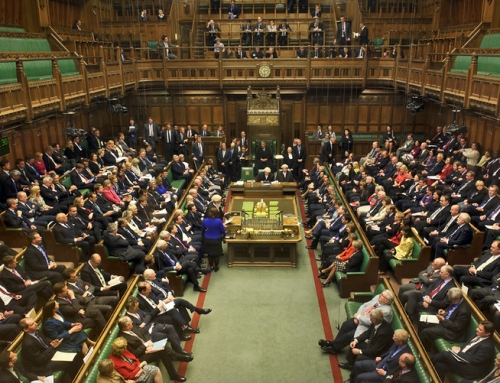- A Government review of school admissions
- Legislation to end selection at 11
- Changes to the School Admissions Code
- More coordination and decision making at local level
- More monitoring at national level
1. A Government review of school admissions
A wide ranging review of secondary school admissions should be commissioned by Government. This should be an objective study which reviews current practice and provides an informed basis for future policy, so that the system can be fair and beneficial to all. Comprehensive Future proposed this in 2012. The proposal was supported by CASE, SEA, IPPR and Compass.
The diversity of school types has increased. An increasing number of schools manage their own admissions and appeals. School intakes differ enormously, partly because of admissions policies and practices. So there is an urgent need for a review of school admissions in order to establish whether the system is fair to all, provides equal access to educational opportunity irrespective of social background and helps or hinders social mobility.
The 2013 Annual report of Chief Schools Adjudicator reported that roughly 40% of all schools including primaries were own admission authorities. The proportion amongst secondaries is higher and increasing. The Adjudicator called on the DfE to ensure that there is clear guidance for new schools and those that change their status to become their own admission authority because many seem unaware of the mandatory requirements of consultation, determination and publication of admission arrangements.
As Coldron, West and Allen noted in 2010 that as previous studies have shown schools that are their own admission authority are more likely to have admissions criteria that enable schools to be unfairly selective in their intakes.
A 2014 report of the Childrens Commissioner on admissions called for ‘large scale qualitative research’ to investigate inequality in school admissions.
A review of school admissions would have to address some crucial questions. Are the powers of local authorities and the adjudicator sufficient to ensure fair admissions? How important is it to have a balanced intake? Are distance criteria a great problem? Strengthening the local community and reducing travel are also important. An intake which includes a full range of backgrounds cannot be achieved in some areas. Can a largely disadvantaged intake be compensated for by increased resources? Would that reduce the pressure to adopt admission criteria preventing some children from attending their local school? Is so called ‘fair banding’ actually fair? Would banding or random allocation to attempt to get a balanced intake be needed if all selection on ability, aptitude and faith were ended? The consideration of such questions must include the criteria admissions authorities use to decide on their intakes.
2. Legislation to end selection at 11
Legislation should be introduced to end selection on ability and aptitude. This can be done gradually starting with year 7. No school need close. No staff need change their jobs. No child’s education need be disrupted and all schools would be comprehensive in a few years.
Selection at 11 continues to affect a significant proportion of English children. Many English children and families experience the misery of rejection at 11.
The Code and the legislation which supports it allow schools which are designated selective schools to select on ability. Others are allowed to select partially on ability or on ‘aptitude’. The evidence of the detrimental effect of selection on children; the unfairness and unnecessary divisiveness resulting and the international evidence that systems which do not divide children have better results has been provided by many writers including Comprehensive Future.
Children’s brains go on developing till early adulthood. No-one and no tests can predict reliably how a child will develop between 11 and 16. Children differ in ability and achievement at 11 but do not divide into two groups, ‘clever’ and ‘not clever’. All children, even late developers, can succeed. Most children who sit the 11-plus fail it. We want all our children to achieve; we should not reject most of them. Excellent all-ability schools ensure that all children receive a first-rate education.
Year after year international comparisons show the highest achieving school systems are comprehensive. The Government wants to close the gap in attainment between rich and poor. Selection widens it. International evidence has shown that time after time. As an 2012 OECD report said “Academic selection widens achievement gaps and inequities…. Data from PISA confirms that countries with more differentiated instruction have greater inequality of performance between students, while there are no significant effects on the overall performance”.
Grammar schools admit few pupils from poor families. Expensive private coaching gets many children through the tests. The Sutton Trust found less than 3% of grammar schools entrants are entitled to free school meals, compared to 18% on average in other schools in areas where grammar schools exist. Four times as many entrants to grammar schools came from independent schools. There is no evidence that ‘aptitude’ can be separated from ability nor is the need to select on aptitude proven. Specialist provision for sport, music, languages and the arts should be available to all children. A fully comprehensive system would achieve better results for all the nation’s children.
Schools are at the heart of local communities. Children make friends from the local area, parents meet at the school gates and some may help to organise activities that support the school. Selection disrupts relationships, lengthens travel and makes it difficult, if not impossible, to develop a pattern of strong local schools.
So Comprehensive Future believes that there are sound reasons for Government to end selection at 11. None of the three main political parties want more grammar schools but selection at 11 on ability and aptitude remains. It can be done. We want schools which currently select to begin to admit all children, starting with the year 7. In 8 years, without any school closing or current pupils or staff being disturbed, the schools will become comprehensive. This could start now.
If change is to win the support of national and local politicians, and if it is to reassure local communities, a plan for the transition to a comprehensive system in the 36 local authorities which have selective schools should achieve four particular outcomes. It should –
- be part of a process that will lead to a general improvement in educational opportunities and standards;
- improve the educational opportunities of children in all the schools;
- reassure the parents of children already in grammar schools that their children will not suffer disadvantage;
- reassure the parents of younger children that their educational opportunities will not reduce as selection is phased out.
Because politicians will be apprehensive about the reaction of parents in local communities and because some parents with children in grammar schools are likely to be strongly opposed, a successful plan for the transition will need to contain specific measures to reassure parents. Because comprehensive schools are routinely disparaged, guarantees will need to be given to win the support of local parents, who in some areas will have no experience of the comprehensive system. Their most obvious concerns will probably be about the timing of the change and the possibility that the grammar schools will be downgraded in some way. Anxieties about the local community “losing” grammar schools or by the loss of the grammar schools’ best teachers are likely to surface. Politicians will need to be persuaded that the argument for a fully comprehensive system is worth winning and can be won.
On this basis a successful plan for the transition in areas where there are selective schools should contain these elements:
- During the period of transition starting with the year 7 intake grammar schools should admit a non-selective intake of pupils year by year. So the transition should take place over a number of years so that every pupil who has been accepted into a grammar school before the transition begins will be able to complete their education in the school.
- No school would close.
- There would be no enforced changes in the staffing of grammar schools during the period of transition.
- During the transitional period the Government should guarantee investment in teaching and curriculum development to ensure that the schools have the capacity and expertise to educate the intake of pupils of all abilities to a high standard.
- A procedure will be needed to ensure, through liaison with the best performing comprehensive schools in the UK, that best practice is applied and any concerns about the needs of more able to succeed in the new comprehensive schools are met.
- Training should be made available to ensure that teachers in existing secondary modern and grammar schools have the necessary skills to teach pupils with a wide range of abilities and aptitudes.
- This procedure should be supervised by a named official or official body.
Politicians, particularly Labour ones, say that ending selection should be a local decision. In 1998 a process of petitioning and balloting was introduced to allow change if local parents voted for change. These rules were fraught with difficulties and unfairness. Furthermore Government stood aside, avoiding making the decision centrally despite the sound educational reasons for ending selection.
We want to see Government take the lead and make the decision to end selection at 11. The case is strong. If Government makes the case for ending selection local parents will support it. However if a local input is demanded, all parents affected must have right to petition and vote. So when the decision is made at national level to end selection we propose that all primary parents, those most affected, should be able to petition and ballot to keep selection if that is what the majority want.
3. Changes to the School Admissions Code
The School Admissions Code should apply equally to all schools regardless of their status. The introduction of banding should be a local decision; include all schools in the area and the test should take place in the primary schools. Banding across the local area profile must be used rather than across those applying to the school or use the national profile for comparison. Comprehensive Future welcomes the adoption by some faith schools of an open admissions policy which welcomes all children regardless of faith
The introduction of a School Admissions Code in 1998 was a welcome step forward. There have been revisions which have mostly but not universally improved its effect. Changes in the current Code allow academies to agree a variation in relation to admission arrangements with the Secretary of State. Currently academies can prioritise applicants eligible for free school meals and the Secretary of State is able to allow academies not to comply with the School Admissions Code. The Code sets out which admissions criteria are acceptable. A Government review for school admissions would need to consider how these are being used.
The current Code allows three types of banding– across the range of applicants to the school; across the range of ability of children in the local area and the national ability range. Several schools band by setting a test of applicants to the school which can mean that only those children whose families are able to arrange to bring them to the school on the test days can sit the test. This naturally excludes some families. Some band using the national profile rather than the local one. Some academies have 9 bands some 4, some 5. Some take half the intake from near the school, half from further away. A few local authorities set a test for all children. A recent report from the Sutton Trust focused on banding and random allocation (balloting) for school admissions. It found that distance and sibling remain the predominant oversubscription criteria for non-selective state schools. There has been an increase in the use of banding and random allocation but still only 5% of comprehensives were using either for the 2012 intake.
However there are concerns over banding. Like all forms of selection it can separate friends. In rural areas it could mean children travelling long distances to schools. Mortimore has pointed out that like all forms of selection it is based on perceived ability, is very unreliable and leads to low expectations of those so labelled. The Sutton Trust report authors also found in some areas that although the test is taken by all children in the local authority some schools then band from those applying rather than in relation to the ability profile of the local authority.
The Sutton Trust and Mortimore have supported the idea of random allocations to schools based on defined areas, for example London boroughs or sub areas of larger local authorities. It would be unsuitable for rural areas as it would involve long journeys to school. Random allocation like banding can mean the separation of friends and communities. Some schools have admission criteria which give priority to the local area and then random allocation for those living further away.
Not all faith based schools select on faith. Some faith schools are adopting the policy of the Fair Admissions Campaign that faith schools should not select on faith. However most do select on religion and new free schools are being set up which select partially on faith. The Fair Admissions Campaign has highlighted the social divisions that arise from the use of faith based admissions criteria. The Adjudicator has criticised some schools for the way they measure faith adherence.
3. More coordination and decision making at local level
Local authorities should be supported as the middle tier in between schools and national Government ensuring fair admissions. They have democratic legitimacy and local accessibility. All local authorities should fulfil their responsibility in ensuring fair school admissions. Local authorities should be encouraged and funded to carry out their existing duties to the highest standard – to ensure fair access; challenge all local schools to have lawful admission arrangements and provide clear information for parents. The local authorities’ role should be extended by giving them a new statutory duty to manage school admissions in all local schools, so that they would make the decision about whether applicants meet the schools’ admissions criteria. This would ease the burden on schools and make the process more open. Local authorities should manage the appeals for all local schools. The duty to provide a local forum involving stakeholders to consider school admissions should be reinstated and supported. These local forums should agree the admission criteria for all local schools.
The role of the local authority The Labour Government improved admissions significantly by giving the local authorities a major coordinating role in coordinating admissions ending the situation where parents had to apply to several schools individually. This made a huge difference to parents’ experience of choosing a school.
Now the creation of a parallel school system outside the (already fragmented) maintained school sector is giving cause for concern about admissions. As more schools become academies able to set their own admission criteria, decide which applicant meets them and carry out appeals we are likely to return to the confusion and unfairness of the past. It is quite possible that amid the welter of criteria in a particular area some children will be left without reasonable access to any nearby school.
The IPPR in 2007 recommended that to ensure fairness and a balanced intake all admission criteria should be set by the local authority and managed by the local authority. Coldron, West and Allen noted in 2010 there is a case for moving admission powers away from individual schools and putting them into the hands of an independent body that administers admissions across an area and ideally sets admissions criteria that are consistent across all schools. They said that if admissions were administered by an independent body, it would increase the transparency of the process and ensure that decisions are not made behind closed doors with no external scrutiny.
Reflecting concern about schools having intakes which differ greatly from their neighbourhood the RSA Pearson Commission on Academies proposed that schools should compare their intakes to those applying. Comprehensive Future believes that it would be more effective if local authorities compared the intakes of their local schools with the locality; comparing applicants with intake does not take into account that some parents may be put off applying the first place. If data was data nationally available to enable these comparisons between the intakes of all schools and their communities, this would support local authorities in ensuring fair admissions and allow them to provide this information locally. Local authorities are required by the Code to make annual reports about local admissions, so this duty could be added to these reporting requirements or reported as part of the school census.
The 2013 report of the Chief Schools Adjudicator indicates that some local authorities are failing to challenge local own admission authorities to meet the requirements of the code. Local authorities are ideally placed to ensure fairness in admissions but there is a need for a more consistent approach and a need to support and challenge local authorities to carry out this work.
As well as deciding on who to admit own admission authority schools also carry out their own appeals. The recent RSA Commission on academies concluded that local authorities should carry out the appeals on all schools in their area. This was supported by the then Administrative, Justice and Tribunals Council. That would lift the burden from schools and ensure consistency of approach.
The revised Code of Practice transferred responsibility for co-ordinating in year admissions from local authorities to schools. An RSA report (Between the Cracks) in July 2013 analysed in year admissions. The report did not recommend restoring the responsibility to local authorities but made several recommendations including the need for research and to strengthen the powers of the adjudicator. Local authorities did not have the responsibility for in year admissions for very long and it may be there were teething troubles. Some authorities have retained the responsibility at the request of local schools.
Local authorities coordinated fair access protocols. These work best if all schools which are admission authorities co-operate. If one school withdraws a domino effect can lead to breakdown. Cooperation is vital to ensure for example that all schools take a fair share of excluded children.
A local forum on admissions. Previous Codes required local authorities to set up admissions forums involving all local schools looking at the fairness of local admissions. The Coalition removed the requirement, and now claims this as part of its policy of removing a burden on schools. Comprehensive Future surveyed the views of Chairs of Admission Forums in 2011. There was strong support for such a local forum. The removal of the statutory duty to have admission forums has meant that a valuable means of involving local stakeholders in considering the fairness of local admissions has been lost.
As more and more schools set their own admissions criteria the need for a local mechanism to consult on schools’ admissions becomes more urgent. The increase in banding, random allocation, aptitude selection and selection by faith need careful consideration at local level.
4. Monitoring fairness at national level
The regulation of admissions and appeals should be the same for all schools whether academies or maintained. There should be strengthened national monitoring of admissions by extending the powers of the adjudicator to be able to make changes directly rather than merely comment on breaches of the Code. Information should be published by central Government comparing each school’s intake to those who applied and those who live locally.
Because of the fragmented nature of the education system monitoring at national level is complex. Although objections about the admission arrangements of academies can now be made to the adjudicator the Education Funding Agency has a role in ensuring compliance with the funding agreement which will include admission arrangements and over the administration of appeals. The role to investigate maladministration of maintained school appeals is with the Local Government Ombudsman.
No objection to the Adjudicator can be made about any variations to compliance with the Code which are agreed in funding agreements with the Secretary of State. Although the adjudicator can make recommendations having investigated which may go beyond the original objection action can only be taken if there is first an objection. As well as illustrating the need for energetic local monitoring by a local forum and the local authority it shows the need for a change in the powers of the adjudicator.




